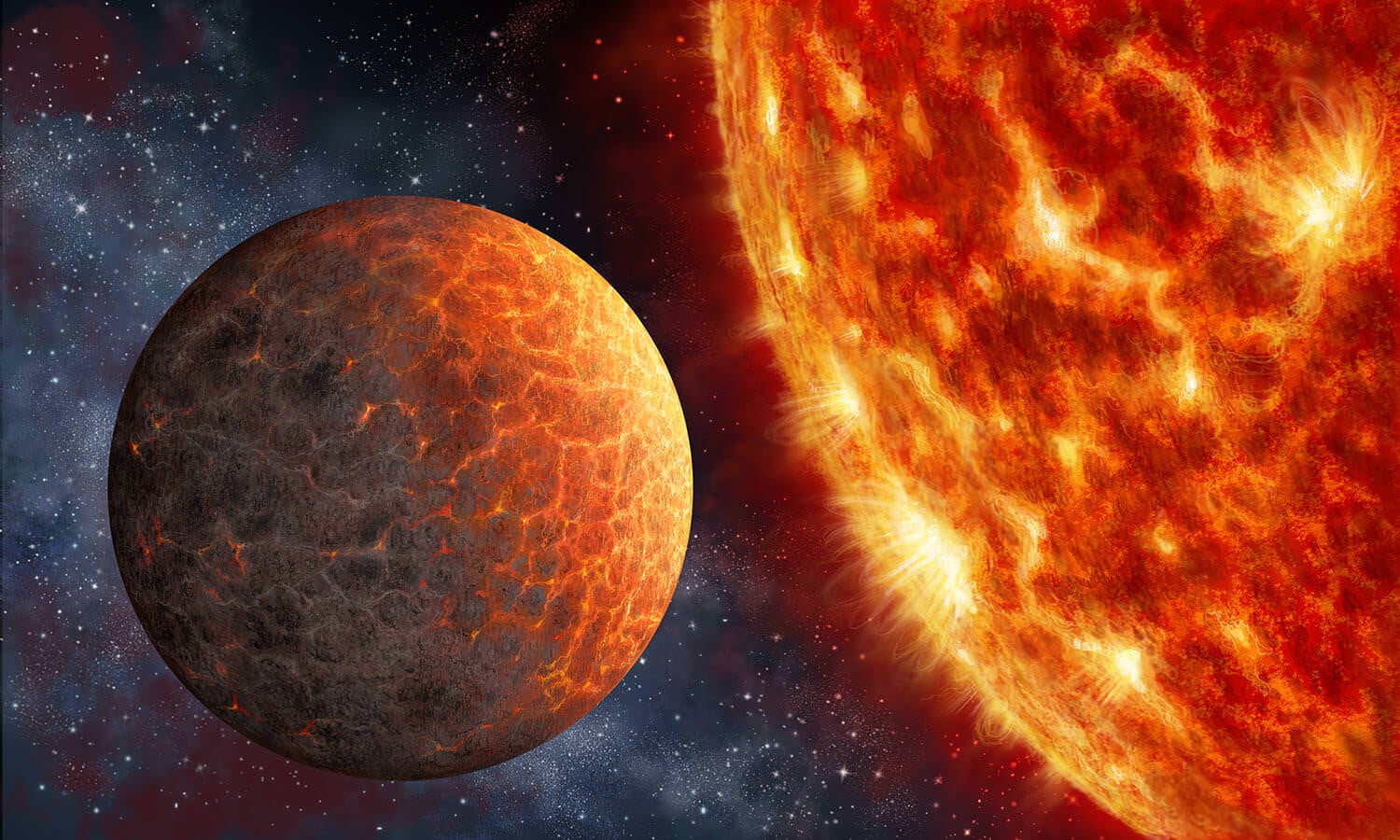It has been an exciting time for exoplanet research of late! Back in
February,
the world was astounded when astronomers from the European Southern Observatory (ESO) announced the discovery of seven planets in the
TRAPPIST-1
system, all of which were comparable in size to Earth, and three of which were found to orbit within the star's habitable zone.
And now, a team of international astronomers has announced the discovery of an extra-solar body that is similar to another terrestrial planet in our own Solar System. It's known as
Kepler-1649b
, a planet that appears to be similar in size and density to Earth and is located in a star system just 219 light-years away. But in terms of its atmosphere, this planet appears to be decidedly more "Venus-like" (i.e. insanely hot!)
The team's study, titled "
Kepler-1649b: An Exo-Venus in the Solar Neighborhood
", was recently published in
The Astronomical Journal
. Led by Isabel Angelo - of the SETI Institute, NASA Ames Research Center, and UC Berkley - the team included researchers also from SETI and Ames, as well as the
NASA Exoplanet Science Institute
(NExScl), the
Exoplanet Research Institute
(iREx), the
Center for Astrophysics Research
, and other research institutions.
[caption id="attachment_134870" align="aligncenter" width="580"]
Diagram comparing the Solar System to Kepler 69 and its system of exoplanets. Credit: NASA Ames/JPL-Caltech
[/caption]
Needless to say, this discovery is a significant one, and the implications of it go beyond exoplanet research. For some time, astronomers have wondered how - given their similar sizes, densities, and the fact that they both orbit within the Sun's habitable zone - that Earth could develop conditions favorable to life while Venus would become so hostile. As such, having a "Venus-like" planet that is close enough to study presents some exciting opportunities.
In the past, the
Kepler mission
has located several extra-solar planets that were similar in some ways to Venus. For instance, a few years ago, astronomers detected a Super-Earth -
Kepler-69b
, which appeared to measure 2.24 times the diameter of Earth - that was in a Venus-like orbit around its host the star. And then there was
GJ 1132b
, a Venus-like exoplanet candidate that is about 1.5 times the mass of Earth, and located just 39 light-years away.
In addition, dozens of smaller planet candidates have been discovered that astronomers think could have atmospheres similar to that of Venus. But in the case of Kepler-1649b, the team behind the discovery were able to determine that the planet had a sub-Earth radius (similar in size to Venus) and receives a similar amount of light (aka. incident flux) from its star as Venus does from Earth.
However, they also noted that the planet also differs from Venus in a few key ways - not the least of which are its orbital period and the type of star it orbits. As Dr. Angelo told Universe Today via email:
[caption id="attachment_134850" align="aligncenter" width="580"]
Artist's impression of a Venus-like exoplanet orbiting close to its host star. Credit: CfA/Dana Berry
[/caption]
In other words, while the planet appears to receive a comparable amount of light/heat from its host star, it is also subject to far more low-energy radiation. And as a potentially tidally-locked planet, the surface's exposure to this radiation would be entirely disproportionate. And last, its proximity to its star means it would be subject to greater tidal forces than Venus - all of which has drastic implications for the planet's geological activity and seasonal variations.
Despite these differences, Kepler-1649b remains the most Venus-like planet discovered to date. Looking to the future, it is hoped that next-generations instruments - like the
Transiting Exoplanet Survey Satellite
(TESS), the
James Webb Telescope
and the
Gaia spacecraft
- will allow for more detailed studies. From these, astronomers hope to more accurately determine the size and distance of the planet, as well as the temperature of its host star.
This information will, in turn, help us learn a great deal more about what goes into making a planet "habitable". As Angelo explained:
The development of such instruments will be especially useful given joust how many exoplanets are being detected around neighboring red dwarf stars. Given that they account for roughly
85% of stars in the Milky Way
, knowing whether or not they can have habitable planets will certainly be of interest!
Further Reading: The Astronomical Journal
 Universe Today
Universe Today
